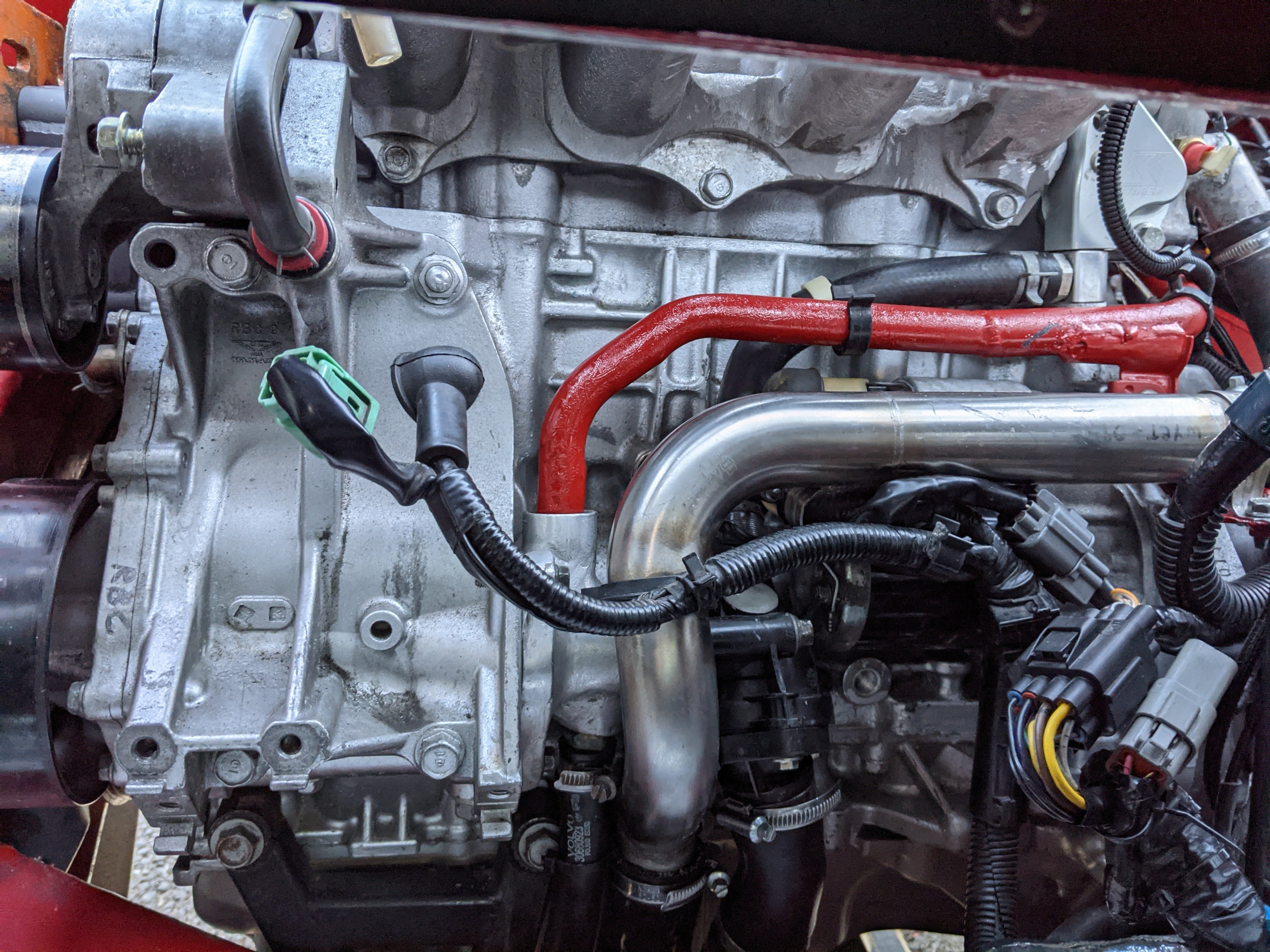(EDIT - wrote this last night & forgot to post it)
Yes, pics of physical installation are more helpful than diagrams to me

FYI - mine is K24 drivetrain, not Fiat 1500
Yes, if ambient temps are below around 80ºF, the cooling system temp will typically never reach normal op (190ºF) unless I let it sit idling for long enough for that to happen, and then it will drop to around 170ºF when moving under light load.
Under heavy load & higher RPM (5-8K rpm) temp will typically drop below that.
View attachment 62286
Yesterday, with temps over 90ºF, the operating temp rose promptly to 190 in light load driving & stayed at 190-200ºF in operation, only dropping to 170 range when driven hard.
My rad is custom all aluminum 29.25"x12.75"x approx 2". Stock Honda/Acura water pump, no restrictive components in the whole system (besides t/stat)
I had to use a 160ºF t/stat, as with the coolant temp drop created by the thermostat extension housing (required to maintain use of bypass t/stat setup) off the water pump housing, the engine would run hot (220ºF) with a standard 180ºF t/stat.
View attachment 62290
EDIT 06/01 - 70ºF ambient at 6:20am today - gauge never got over about 150ºF
View attachment 62367


